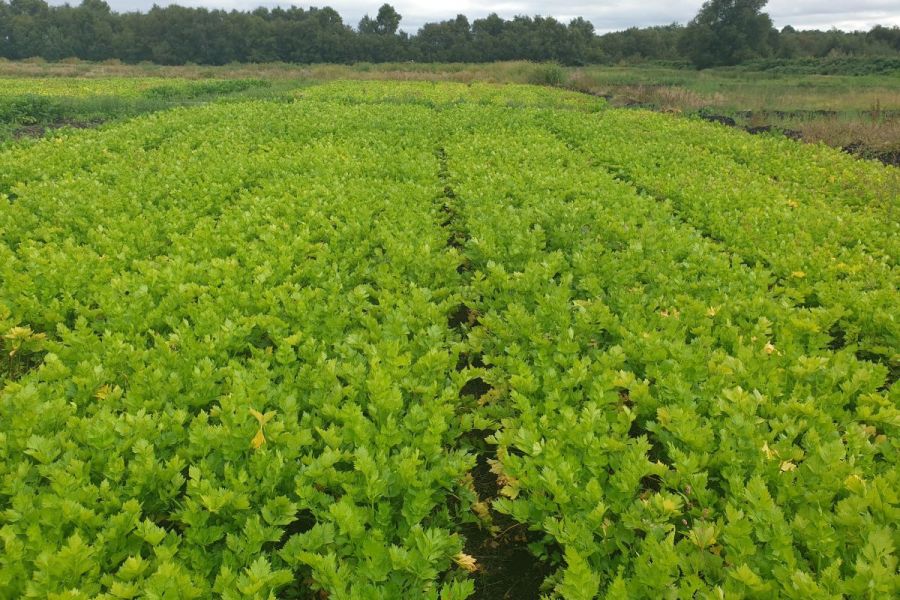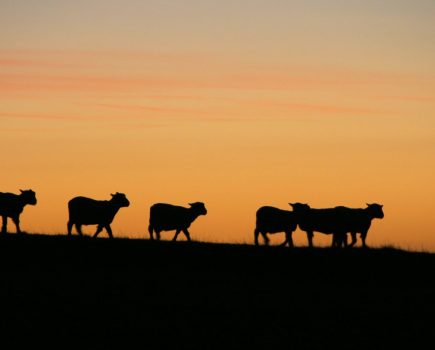It’s a term that’s creeping into the lexicon of researchers and industry alike, but what is paludiculture, why has it suddenly popped up, and how does it differ from traditional peatland restoration? CPM investigates.
“Paludiculture poses an opportunity for growers to halt carbon losses while continuing to make a livelihood.”
By Janine Adamson
Paludiculture – another ‘culture’ to add to the mix. According to online sources, as the word is yet to be featured in the Oxford Dictionary, it’s ‘the productive land use of wet and rewetted peatlands that preserves the peat soil and thereby minimises CO2 emissions and subsidence’.
Joe Lloyd, a research analyst at Savills, says in simple terms, it’s a way of farming wetlands without harming the environment. “Paludiculture’s primary aim isn’t to be restorative – it acknowledges making a return from that land by creating an alternative farming system.”
Furthermore, instead of draining wetlands to facilitate the production of conventional crops, often high value vegetables, paludiculture involves cultivating species that thrive in waterlogged conditions such as reeds, willow, sphagnum moss and some types of berries.
Joe says for lowland peat soils, this is usually achieved through raising and controlling the water table, and in doing so, it helps to reduce carbon emissions, preserve the natural wetland ecosystem and provide new opportunities for agriculture.
So why has this term suddenly come to the fore? For one, the government aims to restore 25% of lowland peat by 2050 and implement rewetting/sustainable management on 75% of lowland peat cropland by 2050 – the latter is where paludiculture sits. These targets have been implemented because peat soils consist of 30-45% carbon and it’s estimated that 3.2Bn tonnes of carbon is stored in UK peatland.
Therefore, it’s acknowledged that these soils should be managed carefully to enable carbon sequestration and contribute towards current net zero emissions targets.
Gareth Whatmore of Drone RePeat says peatlands are a unique natural resource, forming distinct ecosystems that act as carbon sinks.
“As the UK’s single largest carbon store, peatlands cover approximately 3M hectares of land. However, those same peatlands are estimated to emit around 23.1M tonnes of CO2 into the atmosphere every year, largely due to degradation and draining.”
The impact of peatland degradation on the environment is further explored in a WWF commissioned report written by the UK Centre for Ecology & Hydrology (UKCEH) and NIAB – ‘The future of vegetable production on lowland peat’.
Lead author Dr Jenny Rhymes says with the government’s aim to re-wet/implement sustainable management on 75% of lowland peatland for conservation purposes, this could have a significant bearing on lowland peat farmers. “It also has an impact on UK food security – where will we source our vegetables from? Plus, is this simply offsetting our greenhouse gas emissions and carbon elsewhere?
“As an alternative, paludiculture poses an opportunity for growers to halt carbon losses while continuing to make a livelihood rather than embarking on straight conservation practices,” she says.
And ‘opportunity’ is the key word in this instance. Jenny is keen to stress that as reflected by its present omission from the Oxford Dictionary, paludiculture is in its infancy. “There isn’t a conclusive farming model yet. We know the potential of it but this research field has only recently begun, with nothing yet being carried out at scale. Bear in mind it’s taken centuries, or even millennia, of selective breeding to produce high-yielding crop varieties, so paludiculture does have some catching up to do,” she says.
Currently, Jenny believes that’s mainly due to financial barriers because ‘it doesn’t stack up’ compared with growing high value vegetable crops. “To make paludiculture work at scale, there has to be an element of stacking incomes and a part of this will involve maximising carbon credit revenues.”
However, Jenny says one paludiculture-appropriate species which could make financial sense is perennial energy crop, miscanthus (elephant grass). She’s been overseeing trials for the past three years which investigate growing the crop within a full paludiculture setting.
Although the water table wasn’t raised until year two of the trial, to allow the crop to establish, she says the miscanthus appears to have taken well under the wetter conditions.
“In terms of an income, through pyrolysis, miscanthus can be converted to bio-oil, biochar (organic material that’s been carbonised under high temperatures), and non-condensable gases. With the biochar, this has the potential to tap into the carbon credit market which suddenly makes the concept more viable.
“Equally, there’s the capability to incorporate miscanthus within a larger farming system, for example, using its biomass to produce energy which heats glasshouses for protected vegetable production,” she says. “This would be in addition to the biochar.”
During Jenny’s research into paludiculture, she’s spoken to various farmers who cultivate peatland. For those on the Fens, she’s found growers are receptive to crops such as willow and miscanthus because of their more conventional appearance. Whereas for some of the more specialist paludiculture species, such as bulrush, from a visual perspective, they may be perceived as wetland restoration in disguise, she says.
For Joe, identifying suitable paludiculture crops lies in understanding their place in the market and whether there’s a viable customer. “That’ll be the key to making this work. We’re primarily looking at non-food species which also has its own set of challenges,” he comments.
As part of his work for Savills, Joe and his team were commissioned to investigate paludiculture for one of their clients. Among the findings was the identification of six ‘champion’ paludiculture crops – sphagnum moss, typha (cattail/bulrush), Vaccinium macrocarpon (cranberry), bog myrtle, water mint and angelica (wild celery).
Given the extremely niche nature of some of those options, he believes sphagnum moss shows some promise in former bog peat scenarios, due to its role as a sustainable substrate and alternative growing medium. “Defra has a target to eliminate peat-based compost by 2028, so if sphagnum could be cultivated in a sustainable way, there would significant opportunity given the popularity of the home-garden market.”
Furthermore, as of January this year, farmers and landowners have the opportunity to be financially incentivised for managing lowland peat through the Sustainable Farming Incentive (SFI). Joe agrees with Jenny that stacking incomes in this way suddenly makes paludiculture far more attractive.
“The option for lowland peat, whereby water levels in cropped or arable peat soils are raised to near the land surface, would pay £1,409/ha,” he adds.
But ultimately, Jenny says paludiculture is still at the stage of figuring out how to make it work for UK agriculture. “German and Dutch farmers are further ahead in terms of the practicalities – they’ve developed low pressure tractors which can travel on wet peat and machines to harvest tough biomass such as reeds. Even so, it hasn’t been rolled out at scale in those countries yet either.
“It’s hoped that an Horizon European funding call will successfully explore paludiculture at scale across various countries including the UK.”
For Sarah Johnson, head of peatland nature recovery at the Lancashire Wildlife Trust, successful adoption could equally lie in a change of terminology.
“During the various paludiculture-related projects that we’ve run as a Trust (see Box 1), we’ve discussed the way that the system is described. Paludiculture seems quite academic, whereas ‘wetter farming’ or ‘higher water table management’ could be more easily understood by farming communities.
“It’s a small but very important aspect to address – that the terminology used adequately describes what it actually is,” she concludes.
This article was taken from the latest issue of CPM. Read the article in full here.
For more articles like this, subscribe here.
Sign up for Crop Production Magazine’s FREE e-newsletter here.




